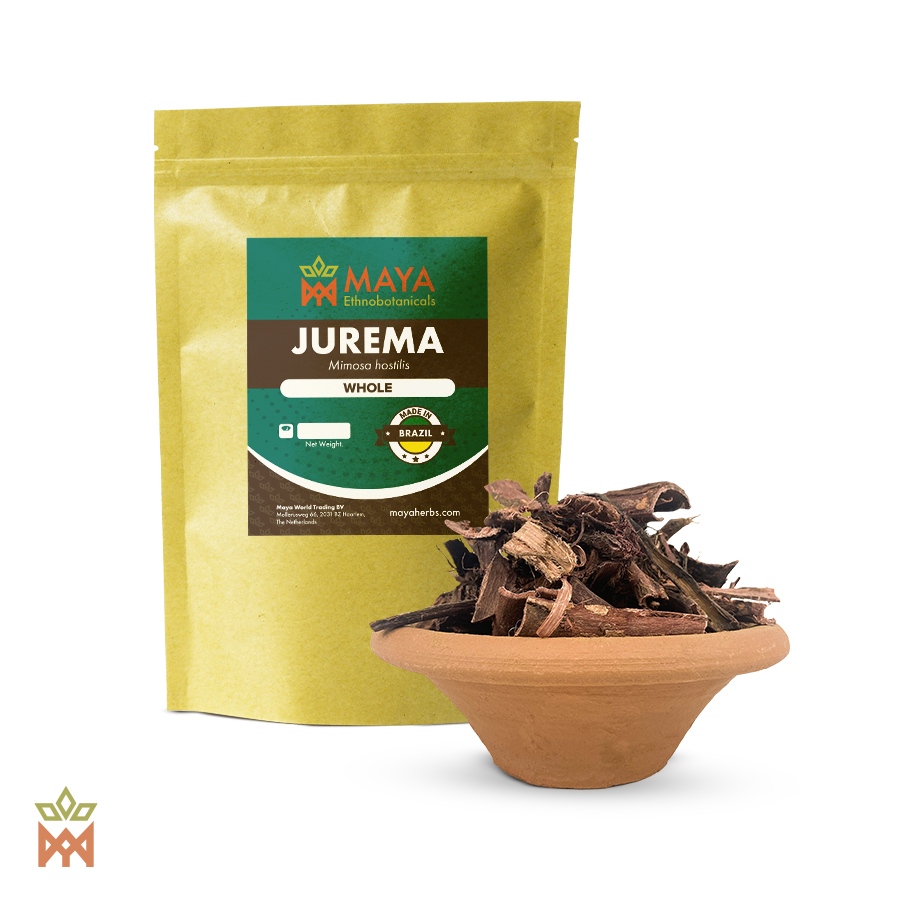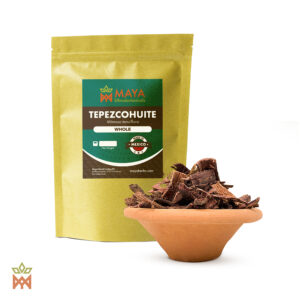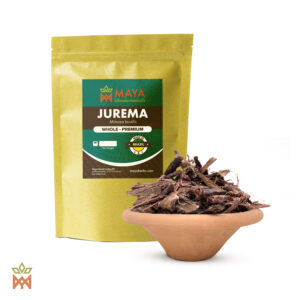Introducing whole Mimosa Hostilis Jurema Root Bark from Brazil.
Mimosa Hostilis (Jurema Preta): Botanical Information and Traditional Uses
Mimosa Hostilis, also known as Jurema Preta, is a perennial tree native to the northeastern regions of Brazil, as well as parts of Central America and Mexico. This plant is highly valued for its diverse applications, including traditional medicine, natural dyeing, and leather tanning. Understanding its botanical characteristics and traditional uses can help appreciate its significance in both historical and modern contexts.
Botanical Information
Scientific Classification:
- Kingdom: Plantae
- Clade: Angiosperms
- Clade: Eudicots
- Order: Fabales
- Family: Fabaceae
- Genus: Mimosa
- Species: Mimosa tenuiflora (synonym: Mimosa Hostilis)
Morphological Characteristics:
Growth Habit: Mimosa Hostilis is a perennial, deciduous tree that can reach heights of up to 8 meters (26 feet). It thrives in arid, semi-arid, and tropical climates, particularly in well-drained soils.
Leaves: The leaves of Mimosa Hostilis are bipinnate, meaning they are composed of small leaflets arranged on either side of a common axis. Each leaf can contain several pairs of pinnae, with each pinna hosting multiple leaflets. This gives the tree a feathery appearance. The leaflets are small, typically measuring between 5 to 15 mm in length, and are sensitive to touch, folding up when disturbed.
Flowers: Mimosa Hostilis produces small, white to pale yellow flowers that are clustered into cylindrical inflorescences, each flower spike measuring between 4 to 8 cm in length. These flowers are fragrant and bloom in abundance during the rainy season, attracting a variety of pollinators.
Fruit: The fruit of Mimosa Hostilis is a flat, brown pod that typically measures 4 to 10 cm in length. Each pod contains several seeds that are dispersed when the pods split open. The seeds are oval and dark brown, encased in a tough outer shell.
Bark and Root Bark: One of the most significant features of Mimosa Hostilis is its bark and root bark, which are rich in tannins and other beneficial compounds. The bark is dark brown to gray and can be peeled away in thin layers. The root bark, in particular, is highly sought after for its traditional uses.
Traditional Uses
Textile Dyeing: Mimosa Hostilis has been used for centuries by indigenous tribes in the Brazilian Northeast for dyeing textiles. The bark and root bark produce a rich, natural dye that can range from reddish-brown to dark purple. The dyeing process involves boiling the bark to extract the pigment, which is then used to color various fabrics. This practice not only provides vibrant, long-lasting colors but also serves as an eco-friendly alternative to synthetic dyes.
Leather Tanning: The high tannin content in Mimosa Hostilis bark makes it an excellent material for tanning leather. Indigenous communities use the bark to treat animal hides, transforming them into durable, water-resistant leather. The process involves soaking the hides in a tannin-rich solution extracted from the bark, which binds to the collagen fibers in the hide and preserves it.
Traditional Medicine: Mimosa Hostilis is also valued for its medicinal properties. Indigenous healers use various parts of the plant to treat a range of ailments. The bark is often used in decoctions and infusions to address skin conditions, wounds, and inflammatory issues. Its antimicrobial properties make it effective in preventing infections and promoting healing.
Ecological Importance
Soil Enrichment: Mimosa Hostilis plays a crucial role in its native ecosystem. As a member of the Fabaceae family, it has the ability to fix nitrogen in the soil through symbiotic relationships with nitrogen-fixing bacteria in its root nodules. This enriches the soil, making it more fertile and supporting the growth of other plants.
Erosion Control: The extensive root system of Mimosa Hostilis helps to stabilize the soil, preventing erosion, especially in arid and semi-arid regions where soil degradation can be a significant problem. The tree’s ability to thrive in poor soils and harsh conditions makes it an essential component of reforestation and land restoration projects.
Wildlife Habitat: The flowers of Mimosa Hostilis attract various pollinators, including bees and butterflies, contributing to the biodiversity of its native regions. Additionally, the tree provides shelter and food for numerous species of birds and insects.
Sustainable Harvesting and Cultivation
Sustainable Practices: Sustainable harvesting of Mimosa Hostilis is crucial to ensure its continued availability and ecological balance. This involves selectively harvesting bark and root bark without damaging the overall health of the tree. By following sustainable practices, indigenous communities can continue to benefit from this valuable resource without depleting it.
Cultivation: Efforts are being made to cultivate Mimosa Hostilis outside of its native range to meet increasing demand for its products. Cultivation involves propagating the tree from seeds, which can be collected from mature pods. Seedlings are typically grown in nurseries before being transplanted to their final locations. Successful cultivation requires mimicking the tree’s natural environment, including appropriate soil conditions, climate, and protection from pests.
Conclusion
Mimosa Hostilis, or Jurema Preta, is a remarkable tree with a rich botanical profile and a wide array of traditional uses. From its role in textile dyeing and leather tanning to its medicinal applications and ecological benefits, this plant is an invaluable resource for the indigenous tribes of the Brazilian Northeast. Sustainable harvesting and cultivation practices ensure that Mimosa Hostilis continues to thrive, supporting both the environment and the cultural heritage of the communities that rely on it. Understanding and appreciating the significance of Mimosa Hostilis allows us to preserve its legacy and promote its benefits for future generations.







Reviews
There are no reviews yet.